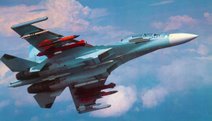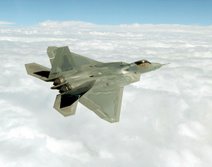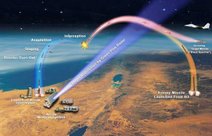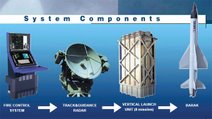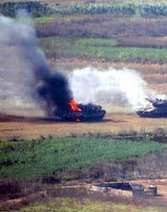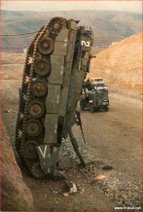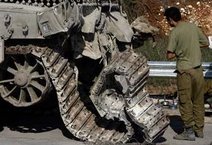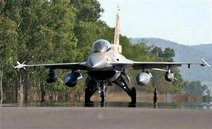
US's strike threat catches China off guard
By Peter J Brown
The United States plans to unveil later this decade a new conventional "Prompt Global Strike" (C-PGS) system. It will enable the US to instantly carry out a massive conventional attack anywhere in the world in an hour or less.
Research and development work by the US Department of Defense (DoD) on C-PGS began almost two decades ago, and this shifted into high gear in 2003. Instead of delivering a nuclear warhead, a new US-based missile and/or some other unmanned delivery vehicle may carry a conventional warhead that is able to destroy a distant target in less than an hour.
The DoD issued the 2010 Quadrennial Defense Review (QDR) on February 1 - which is mandated by the US Congress. It specifically mentions C-PGS prototypes as well as other "long-range strike" capabilities.
"The US cannot take its current dominance for granted and needs to invest in the programs, platforms, and personnel that will ensure that dominance's persistence," wrote US Secretary of Defense Robert Gates in a commentary accompanying the 2010 QDR entitled, "A Balanced Strategy: Reprogramming the Pentagon For a New Age".
"In the case of China, Beijing's investments in cyberwarfare, anti-satellite warfare, anti-aircraft and anti-ship weaponry, submarines, and ballistic missiles could threaten the United States' primary means to project its power and help its allies in the Pacific: bases, air and sea assets, and the networks that support them. This will put a premium on the United States' ability to strike from over the horizon and employ missile defenses and will require shifts from short-range to longer-range systems, such as the next-generation bomber."
Gates struck a balance, however, later in his commentary.
"We should be modest about what military force can accomplish and what technology can accomplish. The advances in precision, sensor, information, and satellite technologies have led to extraordinary gains in what the US military can do," Gates wrote. "The Taliban were dispatched within three months; Saddam [Hussein]'s regime was toppled in three weeks. A button can be pushed in Nevada, and seconds later a pickup truck will explode in Mosul. A bomb dropped from the sky can destroy a targeted house while leaving the one next to it intact."
How best to address the C-PGS program is proving to be a tricky subject for China because there is considerable uncertainty surrounding it.
"It's an emerging realization. I don't think the Chinese have fully come to grips with it," said Dr Jeffrey Lewis, director of the Nuclear Strategy and Nonproliferation Initiative at the Washington DC-based New America Foundation. "At some level, the Chinese see the US as investing in precision conventional munitions and have made their own parallel investments. But the more interesting question - 'Could conventional forces hold at risk China's nuclear forces?' - is something that seems to be just settling in."
One senior US policy analyst wonders whether this has China both confused and concerned about the program.
"Confused because I don't think anyone could explain to them what [C-PGS] entailed and perhaps still cannot with any fidelity, and concerned because it is seen as another aspect of American hegemony and space domination plans, and because it potentially changes US nuclear strategy in unanticipated and perhaps undesirable ways," said this analyst.
Lewis points to a recent meeting, a so-called US-China Track II exchange, involving many US and Chinese participants, which demonstrated how the Chinese may have been caught off guard by the way in which C-PGS has suddenly appeared on their radar screen.
"US participants tried to explain the problem with making a 'no first use' promise. What would happen, they asked, if the United States attacked China's nuclear forces with conventional weapons? Would China still adhere to its 'no first use' promise?" said Lewis. "The Chinese side did not understand that the Americans were engaging in a clumsy 'thought experiment' that was purely illustrative, but instead believed that they had been subjected to a very serious threat of coercion. Such misunderstandings are inevitable and, in fact, this is why Track II discussions are essential. It simply illustrates the point that Chinese and American strategists have yet to think through what impact [C-PGS] will have on strategic stability."
As a result, Lewis doubts that China has formed a consensus yet about how to it should view US conventional strike capabilities emerging under the banner of C-PGS.
"It seems likely that Chinese defense planners will coalesce around the idea that the US is undertaking an open-ended strategic modernization which focuses largely on missile defenses and conventional strike capabilities, and that China needs to continue to improve the survivability of nuclear forces, largely through mobility, and continue to investigate ways to disrupt US command, control and intelligence capabilities," said Lewis.
It is best not to rule anything out when addressing the topic of C-PGS because there are so many variables involved, and so many possible outcomes as well. A report by the Washington, DC-based Center for Defense Information in 2008 - "An Examination of the Pentagon’s Prompt Global Strike Program: Rationale, Implementation, and Risks" - concluded, among other things, that:
CSM is the definite frontrunner as the C-PGS development effort unfolds. US defense giant Lockheed Martin, which plays a central role in the satellite-based US Global Positioning System (GPS) that supports global positioning, navigation, and timing, is also a lead contractor for C-PGS.
In late December, the DoD announced that Lockheed Martin was awarded just over US$16 million "for all design elements through the preliminary design review. Lockheed Martin shall design, fabricate, integrate and test payload delivery vehicle for flight demonstration for the [C-PGS] capability."
Using above-ground launch facilities for CSM is seen by US military planners as a way to make it easy for China and Russia to distinguish quickly that the US missile in question is being fired as part of a C-PGS strike and not a nuclear strike. It is quite likely that CSM will be based at Vandenberg Air Force Base in California and fall directly under the command of the US Strategic Command rather than the new USAF Global Strike Command.
USAF General Kevin Chilton, head of the US Strategic Command, recently said that a C-PGS deployment by 2016 is a "reasonable objective" and yet "he wanted to see a first [CSM] missile on alert, with two spares, before the end of 2012" [1]
That may be optimistic, according to Jason Sigger, a Washington DC-based defense policy analyst who maintains a blogsite called Armchair Generalist. "I question Chilton's insistence that we have this capability in the near term - I just don't see the urgency," he said.
"This capability, in particular, calling for persistent surveillance, electronic warfare, and precision attack capabilities, is going to be tricky. I don't particularly like our military's reliance on technology, but I understand it. We really need to downscope and emphasize good, sustainable weapon systems and better training, rather than to build smart UAVs [unmanned aerial vehicles] and 24-hour strike capabilities."
US submarines carrying Tomahawk cruise missiles, bombers carrying the same type of cruise missiles, along with UAVs such as Reapers and soon perhaps stealthy US aircraft carrier-based UAVs, might be tapped to conduct C-PGS strikes. However, the US Navy's Trident submarine-launch ballistic missiles have already been ruled out by the US Congress for possible C-PGS missions.
C-PGS fits quite neatly into President Barack Obama's "Global Zero" plan to create a nuclear-free world. Still, the 2010 QDR will only prompt opponents of C-PGS to speak out more loudly. Consider what Alexei Arbatov, a scholar in residence at the Carnegie Moscow Center, stated at a recent conference sponsored by the Carnegie Endowment for International Peace:
Russia may brand CSM as an unwelcome spin off of Trident in this regard.
Now that China has terminated all military-to-military exchanges as a result of the US decision to proceed with arms sales to Taiwan, many important issues including C-PGS will probably not be addressed at all in the coming months. And strangely, China in past discussions with the US on nuclear weapons and nuclear disarmament has often alluded to the need for the US to be more mindful of the overall superiority of its conventional firepower.
Whether or not China and the US are talking, Japan is proceeding with the launch of its Quasi-Zenith Satellite System (QZSS). The emergence of the QZSS satellite constellation coupled with the recent approval by the Diet (parliament) of Japan's New Basic Law for Space Utilization - which opens the door for Japan's military space programs - are two important and related developments which China is watching closely.
QZSS works closely in tandem with the US GPS System, for example. It is designed to vastly improve the overall accuracy and availability of satellite-based positioning, navigation and timing information in Japan and East Asia as well as, to a lesser extent, Southeast Asia and Australia.
Both QZSS and the Basic Law involve their own inherent element of ambiguity. While both impact commercial activities in Japan, both could influence the shape and scope of future joint US-Japanese military programs as well the US C-PGS program.
Plans call for the four QZSS monitoring stations in Japan - these are in Hokkaido, Koganei, Ogasawara and Okinawa - to be joined by five other QZSS monitoring stations in India, Hawaii, Guam, Thailand and Australia. QZSS signals are easily accessed over the entire Korean peninsula as well and do not require ground stations there.
While Japan prefers to promote the vast array of commercial and civilian applications of QZSS technology, the military applications cannot be overlooked. QZSS is tied directly to the US GPS satellites, and China is certainly aware of this link. Could QZSS pose a threat to China? This seems entirely feasible.
New Japanese satellites in this instance may seem to be of little consequence, but here again, the ambiguity is pervasive. China remains confused and concerned in the process, and perhaps believes that the US C-PGS program may already exist under another name. The lack of clarity that surrounds this program may make it quite difficult for Beijing and Moscow to figure out exactly what the US is up to here. On the other hand, the US is quite capable of deliberately orchestrating this ambiguity so that North Korea and Iran in particular can only guess what exactly the US has in mind.
Notes:
1.) US Military Eyes Fielding 'Prompt Global Strike' Weapon by 2015, July 1, 2009, globalsecuritywire.org. 2.) Russian Experts Question Role of Conventional 'Prompt Global Strike' Weapons, April 7, 2009, nti.org.
By Peter J Brown
The United States plans to unveil later this decade a new conventional "Prompt Global Strike" (C-PGS) system. It will enable the US to instantly carry out a massive conventional attack anywhere in the world in an hour or less.
Research and development work by the US Department of Defense (DoD) on C-PGS began almost two decades ago, and this shifted into high gear in 2003. Instead of delivering a nuclear warhead, a new US-based missile and/or some other unmanned delivery vehicle may carry a conventional warhead that is able to destroy a distant target in less than an hour.
The DoD issued the 2010 Quadrennial Defense Review (QDR) on February 1 - which is mandated by the US Congress. It specifically mentions C-PGS prototypes as well as other "long-range strike" capabilities.
"The US cannot take its current dominance for granted and needs to invest in the programs, platforms, and personnel that will ensure that dominance's persistence," wrote US Secretary of Defense Robert Gates in a commentary accompanying the 2010 QDR entitled, "A Balanced Strategy: Reprogramming the Pentagon For a New Age".
"In the case of China, Beijing's investments in cyberwarfare, anti-satellite warfare, anti-aircraft and anti-ship weaponry, submarines, and ballistic missiles could threaten the United States' primary means to project its power and help its allies in the Pacific: bases, air and sea assets, and the networks that support them. This will put a premium on the United States' ability to strike from over the horizon and employ missile defenses and will require shifts from short-range to longer-range systems, such as the next-generation bomber."
Gates struck a balance, however, later in his commentary.
"We should be modest about what military force can accomplish and what technology can accomplish. The advances in precision, sensor, information, and satellite technologies have led to extraordinary gains in what the US military can do," Gates wrote. "The Taliban were dispatched within three months; Saddam [Hussein]'s regime was toppled in three weeks. A button can be pushed in Nevada, and seconds later a pickup truck will explode in Mosul. A bomb dropped from the sky can destroy a targeted house while leaving the one next to it intact."
How best to address the C-PGS program is proving to be a tricky subject for China because there is considerable uncertainty surrounding it.
"It's an emerging realization. I don't think the Chinese have fully come to grips with it," said Dr Jeffrey Lewis, director of the Nuclear Strategy and Nonproliferation Initiative at the Washington DC-based New America Foundation. "At some level, the Chinese see the US as investing in precision conventional munitions and have made their own parallel investments. But the more interesting question - 'Could conventional forces hold at risk China's nuclear forces?' - is something that seems to be just settling in."
One senior US policy analyst wonders whether this has China both confused and concerned about the program.
"Confused because I don't think anyone could explain to them what [C-PGS] entailed and perhaps still cannot with any fidelity, and concerned because it is seen as another aspect of American hegemony and space domination plans, and because it potentially changes US nuclear strategy in unanticipated and perhaps undesirable ways," said this analyst.
Lewis points to a recent meeting, a so-called US-China Track II exchange, involving many US and Chinese participants, which demonstrated how the Chinese may have been caught off guard by the way in which C-PGS has suddenly appeared on their radar screen.
"US participants tried to explain the problem with making a 'no first use' promise. What would happen, they asked, if the United States attacked China's nuclear forces with conventional weapons? Would China still adhere to its 'no first use' promise?" said Lewis. "The Chinese side did not understand that the Americans were engaging in a clumsy 'thought experiment' that was purely illustrative, but instead believed that they had been subjected to a very serious threat of coercion. Such misunderstandings are inevitable and, in fact, this is why Track II discussions are essential. It simply illustrates the point that Chinese and American strategists have yet to think through what impact [C-PGS] will have on strategic stability."
As a result, Lewis doubts that China has formed a consensus yet about how to it should view US conventional strike capabilities emerging under the banner of C-PGS.
"It seems likely that Chinese defense planners will coalesce around the idea that the US is undertaking an open-ended strategic modernization which focuses largely on missile defenses and conventional strike capabilities, and that China needs to continue to improve the survivability of nuclear forces, largely through mobility, and continue to investigate ways to disrupt US command, control and intelligence capabilities," said Lewis.
It is best not to rule anything out when addressing the topic of C-PGS because there are so many variables involved, and so many possible outcomes as well. A report by the Washington, DC-based Center for Defense Information in 2008 - "An Examination of the Pentagon’s Prompt Global Strike Program: Rationale, Implementation, and Risks" - concluded, among other things, that:
[W]eapon systems developed in pursuit of a PGS capability could raise the probability of an inadvertent nuclear exchange and complicate future arms control negotiations. Accordingly, the ramifications of a PGS capability must be considered within the context of US arms control, nonproliferation and nuclear safety objectives. Only then will policy-makers and Congress be able make informed assessments of the potential advantages, risks and tradeoffs of PGS. As members of Congress consider future DoD budget requests for PGS programs, they should take care to remember that achieving a PGS capability is not an end in and of itself; it only has value in as much as it helps US achieve its broader goals of thwarting attacks on the US homeland, promoting a stable international environment and preventing further proliferation and use of WMDs [weapons of mass destruction].For years, several DoD-funded C-PGS projects have proceeded, including the Falcon Hypersonic Test Vehicle (HTV), the Blackswift hypersonic aircraft, the X-51 scramjet-powered vehicle, and the Conventional Strike Missile, or CSM, which is a modified Minuteman III ballistic missile, to name a few. The US Air Force (USAF) Research Laboratory, the USAF Space and Missile Center, and the US Defense Advanced Research Projects Agency oversee this activity.
CSM is the definite frontrunner as the C-PGS development effort unfolds. US defense giant Lockheed Martin, which plays a central role in the satellite-based US Global Positioning System (GPS) that supports global positioning, navigation, and timing, is also a lead contractor for C-PGS.
In late December, the DoD announced that Lockheed Martin was awarded just over US$16 million "for all design elements through the preliminary design review. Lockheed Martin shall design, fabricate, integrate and test payload delivery vehicle for flight demonstration for the [C-PGS] capability."
Using above-ground launch facilities for CSM is seen by US military planners as a way to make it easy for China and Russia to distinguish quickly that the US missile in question is being fired as part of a C-PGS strike and not a nuclear strike. It is quite likely that CSM will be based at Vandenberg Air Force Base in California and fall directly under the command of the US Strategic Command rather than the new USAF Global Strike Command.
USAF General Kevin Chilton, head of the US Strategic Command, recently said that a C-PGS deployment by 2016 is a "reasonable objective" and yet "he wanted to see a first [CSM] missile on alert, with two spares, before the end of 2012" [1]
That may be optimistic, according to Jason Sigger, a Washington DC-based defense policy analyst who maintains a blogsite called Armchair Generalist. "I question Chilton's insistence that we have this capability in the near term - I just don't see the urgency," he said.
"This capability, in particular, calling for persistent surveillance, electronic warfare, and precision attack capabilities, is going to be tricky. I don't particularly like our military's reliance on technology, but I understand it. We really need to downscope and emphasize good, sustainable weapon systems and better training, rather than to build smart UAVs [unmanned aerial vehicles] and 24-hour strike capabilities."
US submarines carrying Tomahawk cruise missiles, bombers carrying the same type of cruise missiles, along with UAVs such as Reapers and soon perhaps stealthy US aircraft carrier-based UAVs, might be tapped to conduct C-PGS strikes. However, the US Navy's Trident submarine-launch ballistic missiles have already been ruled out by the US Congress for possible C-PGS missions.
C-PGS fits quite neatly into President Barack Obama's "Global Zero" plan to create a nuclear-free world. Still, the 2010 QDR will only prompt opponents of C-PGS to speak out more loudly. Consider what Alexei Arbatov, a scholar in residence at the Carnegie Moscow Center, stated at a recent conference sponsored by the Carnegie Endowment for International Peace:
There are very few countries in the world that are afraid of American nuclear weapons. But there are many countries that are afraid of American conventional weapons. In particular, nuclear weapons states like China and Russia are primarily concerned about growing American conventional, precision-guided, long-range capability, [or C-PGS] systems.[2] The Russians comprehend the inherent ambiguity in the US initiative, and they quickly became the most vocal and adamant opponents of C-PGS in general. It was the strong message from Russia that helped to cancel out the Trident in terms of any C-PGS role after the Russians argued successfully that it would be virtually impossible for them to discern quickly whether a long-range missile fired from a US submarine was carrying a nuclear or a conventional warhead.
Russia may brand CSM as an unwelcome spin off of Trident in this regard.
Now that China has terminated all military-to-military exchanges as a result of the US decision to proceed with arms sales to Taiwan, many important issues including C-PGS will probably not be addressed at all in the coming months. And strangely, China in past discussions with the US on nuclear weapons and nuclear disarmament has often alluded to the need for the US to be more mindful of the overall superiority of its conventional firepower.
Whether or not China and the US are talking, Japan is proceeding with the launch of its Quasi-Zenith Satellite System (QZSS). The emergence of the QZSS satellite constellation coupled with the recent approval by the Diet (parliament) of Japan's New Basic Law for Space Utilization - which opens the door for Japan's military space programs - are two important and related developments which China is watching closely.
QZSS works closely in tandem with the US GPS System, for example. It is designed to vastly improve the overall accuracy and availability of satellite-based positioning, navigation and timing information in Japan and East Asia as well as, to a lesser extent, Southeast Asia and Australia.
Both QZSS and the Basic Law involve their own inherent element of ambiguity. While both impact commercial activities in Japan, both could influence the shape and scope of future joint US-Japanese military programs as well the US C-PGS program.
Plans call for the four QZSS monitoring stations in Japan - these are in Hokkaido, Koganei, Ogasawara and Okinawa - to be joined by five other QZSS monitoring stations in India, Hawaii, Guam, Thailand and Australia. QZSS signals are easily accessed over the entire Korean peninsula as well and do not require ground stations there.
While Japan prefers to promote the vast array of commercial and civilian applications of QZSS technology, the military applications cannot be overlooked. QZSS is tied directly to the US GPS satellites, and China is certainly aware of this link. Could QZSS pose a threat to China? This seems entirely feasible.
New Japanese satellites in this instance may seem to be of little consequence, but here again, the ambiguity is pervasive. China remains confused and concerned in the process, and perhaps believes that the US C-PGS program may already exist under another name. The lack of clarity that surrounds this program may make it quite difficult for Beijing and Moscow to figure out exactly what the US is up to here. On the other hand, the US is quite capable of deliberately orchestrating this ambiguity so that North Korea and Iran in particular can only guess what exactly the US has in mind.
Notes:
1.) US Military Eyes Fielding 'Prompt Global Strike' Weapon by 2015, July 1, 2009, globalsecuritywire.org. 2.) Russian Experts Question Role of Conventional 'Prompt Global Strike' Weapons, April 7, 2009, nti.org.

















